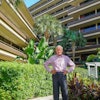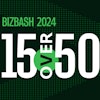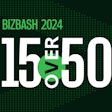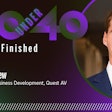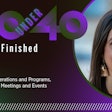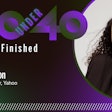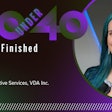As senior director of operations, global exhibitions for Informa Exhibitions, Brian Rubin has 19 years of experience working in the trade show and expo industries. His expertise ranges from registration and management to exhibition, operations and client services. You can call him a jack-of-all-trades.
What are some of the keys to achieving your goals during the event?
The operational goal—the things that transpire behind the scenes, which is the domain I live and breathe in—is to have proper planning, making sure you think through the needs and wants of the audience, knowing the audience and what their expectations are, and having smart, dependable partners. We use a lot of third-party planners who help us with housing, registration, service contractor, floral, etc.
What are some ways Informa gets to know its audience?
We run a customer service group to get constant feedback from what a certain group is looking for and what is expected. Every event is different—the size, location, etc. When pulling those pieces from all your resources—the sales team, customer service group, post-show surveys—you have to use all those tools.
What are some criteria used to select a venue/host destination for events?
We start with the basics of size. We work with the market team to see where
your key exhibitors, concentration of attendees and the demographics of the event are. We look at all those things and decide. We also look at show needs. Is it a manufacturing event where you need to be in a metropolitan city to do tours? We have a couple of large agricultural events. Those are outdoors and we need farmland, so that dictates certain parts of the country. It’s all those things, and sometimes it’s just seeing where people will travel and finding cool locations.
What’s the average attendee number?
It can be anything from a 25-person breakfast conference road show to 100,000-plus for an agriculture event or 125,000 for a consumer-voting event. It’s all over the board.
How have trade shows evolved throughout your career?
Technology has been a major factor, from faxing in registration forms to now everything being done online. I used to do a giant on-site show manual/guide with floor plans and sessions, and remember proofing some that were 50 pages—basically producing a book for the events. Now everything is done on the app, for better or for worse.
For better or for worse, how?
It’s like there is a tool now, and everyone is trying to make everything fit into what they need—to the point that that tool becomes less useful than what it should be; everything is crammed in. There’s too much. People will say, ‘Now I can’t find the session I want to attend.’ There are all these functions, occasions and everything they are trying to impact, and in some ways, it takes away from it.
How has social media affected the events?
It’s a double-edged sword. It definitely helps in the marketing. Sometimes our exhibitors or attendees are our best marketers because they are involved in the industry and people are seeing them go to the shows, and they find value from the shows. But on the other hand, things like people not being happy about the parking situation or the shuttle bus taking too long gets out there and exacerbates the situation a little bit. But from the marketing perspective, it’s been huge. It’s easier and cheaper, and your attendees become your marketers.
What are some of the greatest challenges you’ve faced and how did you overcome them?
With large events, there are size constraints and certain challenges. The event does very well and keeps growing, but the destination doesn’t change and can be a size constraint. We work with partners, surrounding businesses or hotels to utilize other space and get creative in how we’re using that space.
How have you gotten creative with space?
We have some events where we’re selling booths in meeting spaces, hallways and lobbies, providing the location and time of year. We’ve also been creative with outdoor space, shifting show patterns around for more space and thinking outside the box in terms of venues.
Any experience with unconventional locations?
We recently had an event at
Dallas’ AT&T Stadium; it was unique and different for a small conference.
What events are you most proud of planning?
I got in the trade show industry with Natural Product events. I am so proud of them. There is such a purpose behind it. The goal of the event is to obviously connect buyers and sellers, but the end goal is to produce more healthy products for more people. We work on waste expo shows, and historically it’s trucks, trash cans and compactors, but as things evolved, it’s focusing on sustainability. It fits with my lifestyle living in Boulder, Colorado, one of the epicenters of healthy, active living.
Do you have a mentor in this industry?
Yes, my current boss Sandy Voss. I have been working with Voss for over 10 years—half of my career with Informa. She is thoughtful. Not just giving flowers, but if there is a situation or question in front of us, she takes the moment to think it through: ‘What are you going to say and want are you going to do?’ She also taught me to ask a lot of questions, to make sure I understand the details and to be as thorough as I can but to move on. Being in operations, we’re all Type A, detail-orientated, and think in black and white. But at some point, you have to move on. You have to think, ‘Does it matter to me or just the client?’ If it matters to you and no one else will notice, be OK with your decision. But if it matters to other people, you need to take a second look.
From Humble Beginnings
Many event professionals say, as Rubin does, they landed in the events industry “just by random chance.” But he takes it to a new level. After graduating from Colorado State University, he hit the slopes and was a ski bum for a bit before settling down in Boulder, Colorado. He found a job through a temp agency at New Hope Natural Media in 1999 (now Informa Exhibitions), a global company that produces more than 200 trade and consumer exhibitions annually.
Rubin started out cold calling pharmacies in Louisiana to get them to come to Baltimore to attend the Natural Product Expo East show. After his contract expired, he was hired on full time and started to perform data entry; he was later promoted to data entry leader and then to registration coordinator, as his career continued to flourish.
He now manages agriculture, transportation, natural products and food, infrastructure, and design and manufacturing in the events sector for Informa.


